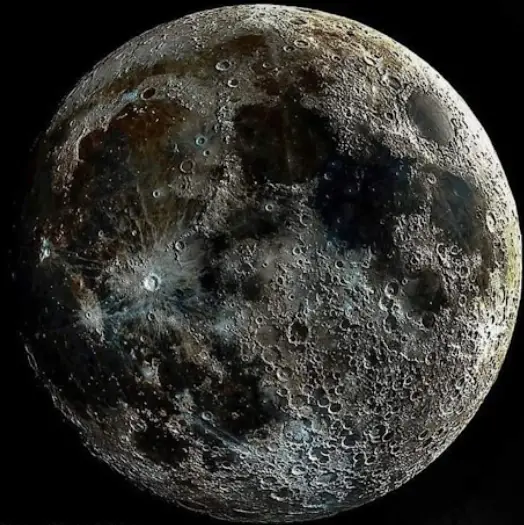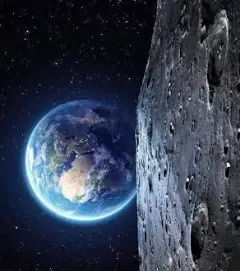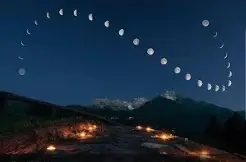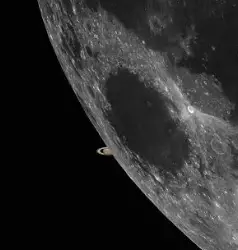 INTERESTING FACTS ABOUT OUR MOON !!!
INTERESTING FACTS ABOUT OUR MOON !!!
Our Moon is by far the brightest and largest object in the night sky. However, it has no light of it’s own. It is lit up by the Sun.
The Moon has no weather, air, or life of any kind whatsoever.
The surface of the Moon has many features, including mountains, valleys, and craters. The majority of the Moon’s craters are impact craters. These were formed when asteroids, meteoroids, or comets collided with the Moon’s surface.
The surface of the Moon is covered in huge dark spots known as “Maria.” “Maria” was named after the Latin word for “seas,” because early astronomers mistook the dark spots for bodies of water, when in actual fact they are flat planes made of hardened lava.

Lunar Maria covers about 17% of the Moon’s surface, and most of them are visible from Earth with the naked eye.
The Moon is about 400 times smaller than the Sun, however, the Sun is about 400 times further away.
Every day, the Moon rises in the east and sets in the west, just like the Sun, though not at the same time.
For us living on planet Earth, occasionally we get to see a total lunar eclipse. This is when the Moon passes in front of the Sun and blocks it out completely, turning day into night.
Moons orbit planets and the planets orbit the Sun.
The gravity of the Sun keeps all the planets in their orbit, just like the planets gravity keeps Moons in their orbit.
An orbit is a journey/path that an object takes in space. For example, stars, planets, moons, asteroids or spacecrafts.
Gravity is the invisible pulling force that works in space. For example, the Sun, which is millions of miles away from our planet, pulls on all the planets and other objects in the Solar System.
Earth’s gravity is what keeps us on the ground.
The Moon’s temperature varies all the time. When the Moon is in sunshine, the surface can reach over 100° Celsius, however, the other side of the Moon facing away from the Sun, can be cold as minus 200° Celsius.
The Moon is always travelling on a path around our planet. The journey it takes is called an orbit. As it travels, it also turns, spinning exactly once, while it orbits Earth.
As the Moon orbits Earth, we get to see different amounts of its sunlit side. This is the reason why the Moon seems to change shape.
There is one side of the Moon we will never see from Earth, as the same side of the Moon faces our planet all the time.

The Moon orbits Earth every 27.3 days.
The average distance from Earth to the Moon is 384,403 km (238,857 miles).
The average distance from the Moon to the Sun is about 150 million km (93.205 million miles).
The Moon was formed about 4.5 billion years ago. Scientist believe a large object hit Earth, blasting out rocks, which joined together and started to orbit around Earth. Eventually, after melting together and then cooling down, the Moon was formed.
The Moon is drifting away from Earth, but it’s movement will take billions of years to affect the planet, as it is only moving about four centimeters per year.
When the Moon was formed all those years ago, the average day was possibly as short as 4 hours. The Moon has slowed that to the more relaxed 24 hours of today.
The Earths gravity keeps the Moon in orbit, while the Moon’s gravity also pulls on the Earth, which effects the ocean tides twice a day, causing the rise and fall of the tides.
The Moon has the largest influence on Earth’s tides, and without it, high and low tides would shrink by an estimated 75%.
The Moons gravity is much weaker than Earth, which makes it difficult to walk. The easiest way is to hop like a kangaroo to get about. For instance, an astronaut can jump up to 6 times higher on the Moon, than he/she could on Earth.
Our view of the Moon changes from night to night due to 2 reasons. Firstly, the Moon emits no light of it’s own, and secondly, the area lit up by the Sun varies, as the Moon circles Earth.
The Moons surface is covered by a grey colored dusty soil.

The Moon is Earth’s only natural satellite.
Our Moon is the fifth largest Moon in the Solar System.
Jupiter’s Moon “Ganymede” is the largest satellite in the Solar System.
At 3,475 km (2,195 miles) in diameter, our Moon is much smaller than the major Moons of Jupiter and Saturn.
Our Moon is roughly a quarter of the size of Earth.
A moonquake is the lunar equivalent of an earthquake.
Lunar means anything related to the Moon.
The Romans named the Moon, “Luna”. The Greeks called it, “Selene” and “Artemis,” after the Greek mystical Gods and Goddesses.
A rocket trip to the Moon takes about 6 days there and back.
The first men to walk on the Moon were Buzz Aldrin and Neil Armstrong on July 20th, 1969, on the Apollo 11 mission.
A gold replica of an olive branch, which is a symbol of peace, was left on the Moon’s surface by Apollo 11.
China became only the third country in the world to successfully collect rocks from the Moon. On December 17th, 2020, the unmanned Chang’e-5 mission returned to Earth carrying the country’s first Moon samples, according to Chinese state media outlet Xinhua. The samples were retrieved from a previously unvisited area of the Moon, and are also the first samples to be collected by any country since the 1970s. China’s achievement follows the United States and the Soviet Union, which both collected lunar samples decades ago.
Elon Musk’s private space company SpaceX has won a $2.9bn NASA contract (2021) to build a spacecraft to put humans on the Moon. NASA’s plan is to get back to the Moon and using that as a platform to send astronauts to Mars.
On Wednesday the 16th of November, 2022, NASA’s most powerful rocket ever launched into space, in what was the first step of a mission to return humans to the Moon. The crewless voyage was the inaugural flight of NASA’s Artemis program. The Artemis 1 was the first flight of the agency’s new Space Launch System (SLS) megarocket and Orion spacecraft.
The SLS rocket launched the unmanned Orion spacecraft on a 26-day mission, during which it orbited the Moon and returned to Earth. The Artemis 2 mission will follow in 2024, sending astronauts around the Moon and back, while the Artemis 3 mission will put astronauts down on the Moon, with the aid of SpaceX’s Starship vehicle. This landmark mission is targeted for 2025 or 2026.




